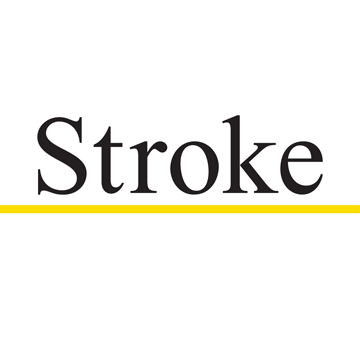Poor Stroke Outcomes in Women Associated with Loss of White Matter Structure
Key findings
- Women have worse poststroke outcomes than men
- Mass General researchers evaluated sex-specific clinical and neuroimaging characteristics of white matter in association with functional recovery after acute ischemic stroke
- The correlation between markers of white matter integrity and functional outcomes in women, but not men, suggests a potential sex-specific mechanism
A team of Mass General researchers, led by Natalia Rost, MD found reduced fractional anisotropy, suggestive of white matter disorganization, correlated with worse functional outcomes after acute ischemic stroke in women but not in men. Researchers also found a statistically significant inverse relationship between fractional anisotropy and age in women (P=0.003), but not in men. They published their findings in Stroke.
Subscribe to the latest updates from Cardiovascular Advances in Motion
Women have less favorable post-stroke outcomes, including higher mortality rates, than men. And while the researchers had already established that the median values for fractional anisotropy of contralesional Normal Appearing White Matter (NAWM) could predict functional outcomes after acute ischemic stroke, they expanded on that work to isolate gender differences. In doing so, they bring attention to a link in females between post-stroke outcomes and the state of brain white matter over time.
As part of this retrospective analysis, admission brain MRIs were performed on 319 patients presenting with acute ischemic stroke who had a confirmed acute lesion on diffusion-weighted imaging (DWI). Over half (58.9%) of subjects were men. Data from subsequent fluid-attenuated inversion recovery and diffusion tensor imaging sequences were also used.
The researchers assessed white matter characteristics and functional outcomes at admission and then at three to six months following the stroke using a modified Rankin Scale score in which excellent functional outcome was defined as mRS <2. Using fluid-attenuated inversion recovery and diffusion tensor imaging MRI, white matter hyper-intensity (WMH) and acute infarct volumes were measured.
Total WMH volume and DWI volume were measured via a semi-automated approach and then normalized for differences in head size. The team also derived diffusivity anisotropy metrics in contralateral NAWM.
Logistic regression analysis of functional outcome used a model of age, sex, diffusivity metrics and WMH volume. Additional analysis included a paired t test, Wilcoxon rank-sum, and Spearman or Pearson correlations.
Women were slightly older (68.0 years) on average than men (62.7 years) and had a greater incidence of atrial fibrillation (21.4% versus 12.2%). Women also had lower rates of tobacco use (21.1% versus 35.9%) and lower admission diastolic blood pressure (78.6 versus 83.2 mm Hg).
When all measurements were compared and analyzed, a marked difference showed that fewer women (49.6%) achieve excellent functional outcomes at three to six months, than men (67%). In women, reduced fractional anisotropy in NAWM and age correlated with worse functional outcomes. The interaction of sex with fractional anisotropy, axial diffusivity and radial diffusivity values was independently associated with excellent functional outcome.
In both sexes, functional outcome was positively correlated with normalized white matter hyperintensity. The interaction of sex with fractional anisotropy, axial diffusivity and radial diffusivity were independently associated with excellent functional outcome.
Across study subjects, no differences appeared between men and women in pre-stroke modified Rankin Scale score, NAWM diffusivity anisotropy metrics, white matter hyperintensity volume, acute infarct volume or through use of the National Institutes of Health Stroke Scale.
Previous studies established that the tissue integrity of NAWM is negatively impacted by age and hypertension.
view original journal article Subscription may be required
Learn more about Mass General's Comprehensive Stroke Center
